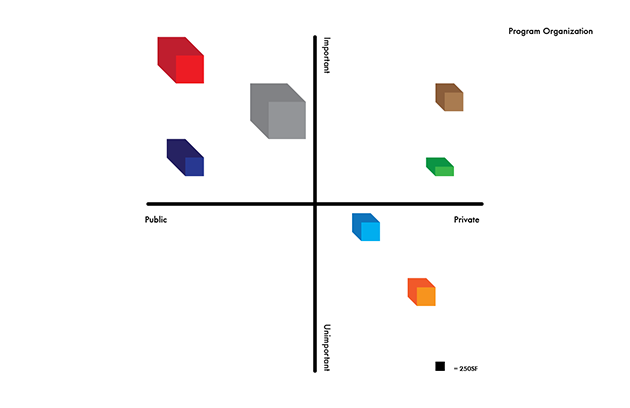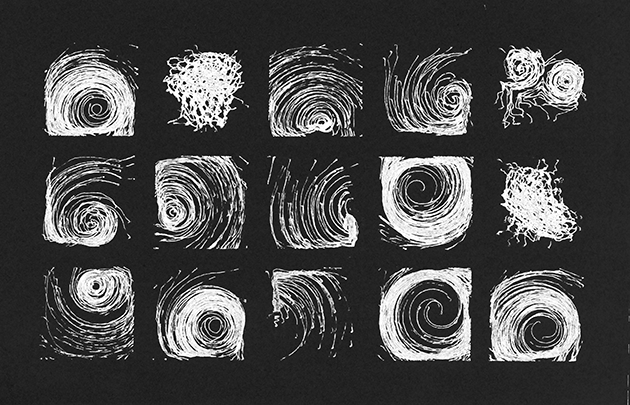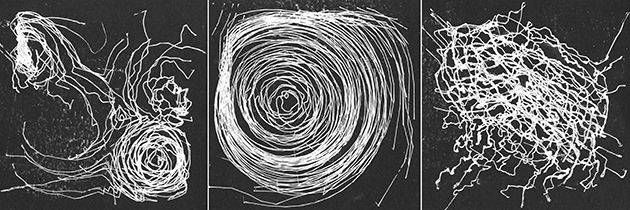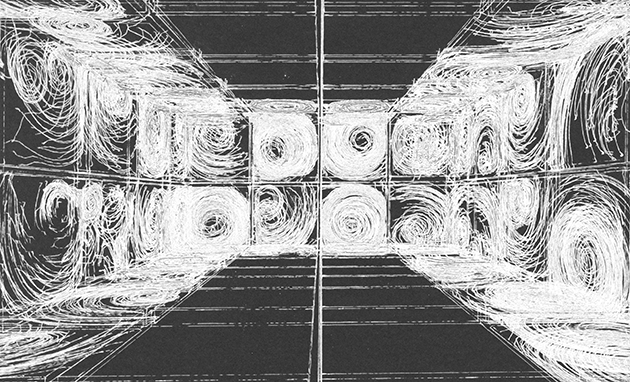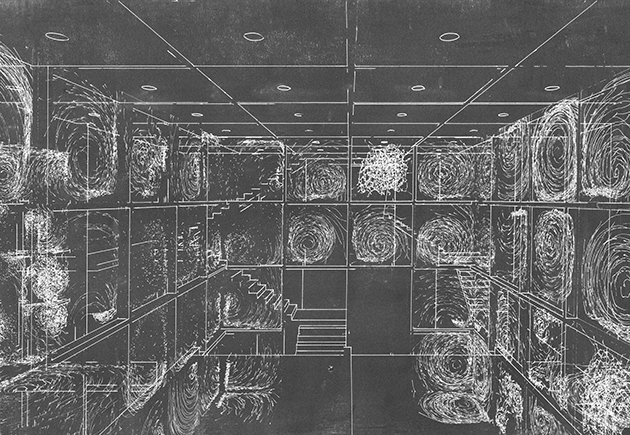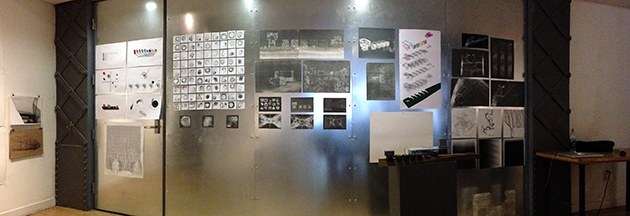
Computing Drawing - Part 3
Illustrator Pen Plotter Python Rhino/Rhinoscript
Client B.Arch, Employer RISD
May 2013
Flocking, sorting, and analyzing the real and imaginary worlds.
My advanced studio, “Computing Drawing” is an introduction into generative drawing techniques utilizing the scripting languages Python, RhinoScript, and Grasshopper, machine codes like HPGL, and physical modeling and drawing. You can explore the first two parts of the studio here and here. Code is available here.
Part three of the semester involved designing a building, specifically a Racquetball Club near Boston's Back Bay.
In order to develop an organized way to distribute programmatic elements, I began by distributing all of the necessary spaces on a two-axis grid according to how public or private they should be, how important or unimportant the space was, and their necessary size.
I then developed a boid-based flocking algorithm, based on the work done by Craig Reynolds in the late 1980s.
Particles are guided and affected by the obstacles, goals, and the other points around them, leaving a trail in their wake.
Using this algorithm, I created a series of 81 squares of flocking lines within square boundaries.
The full set is pen-plotted onto individual white Post-It notes.
They were manually placed according to where differing levels of transparency and privacy were required.

